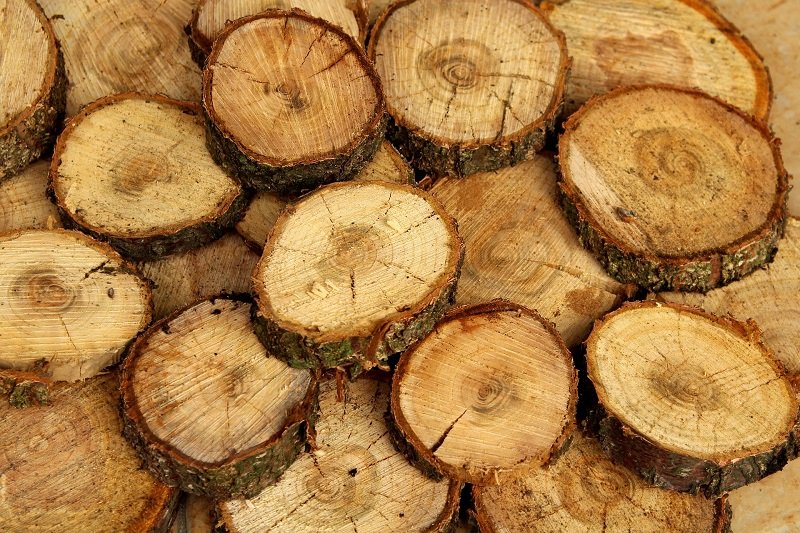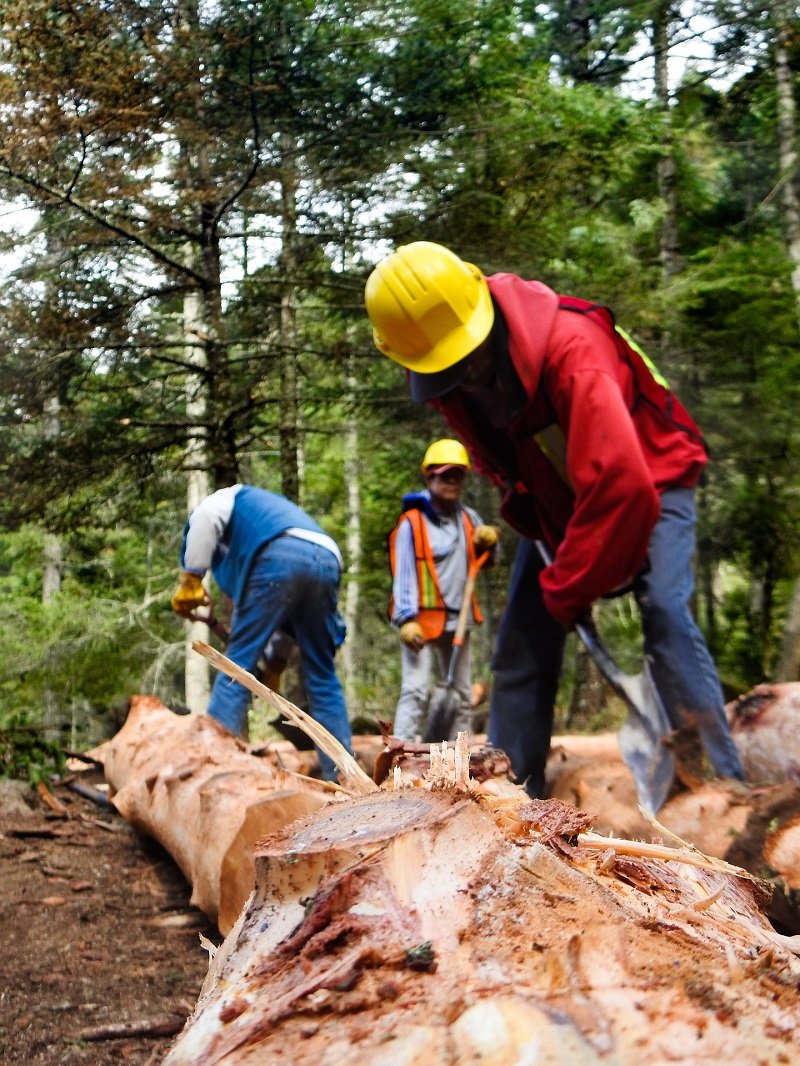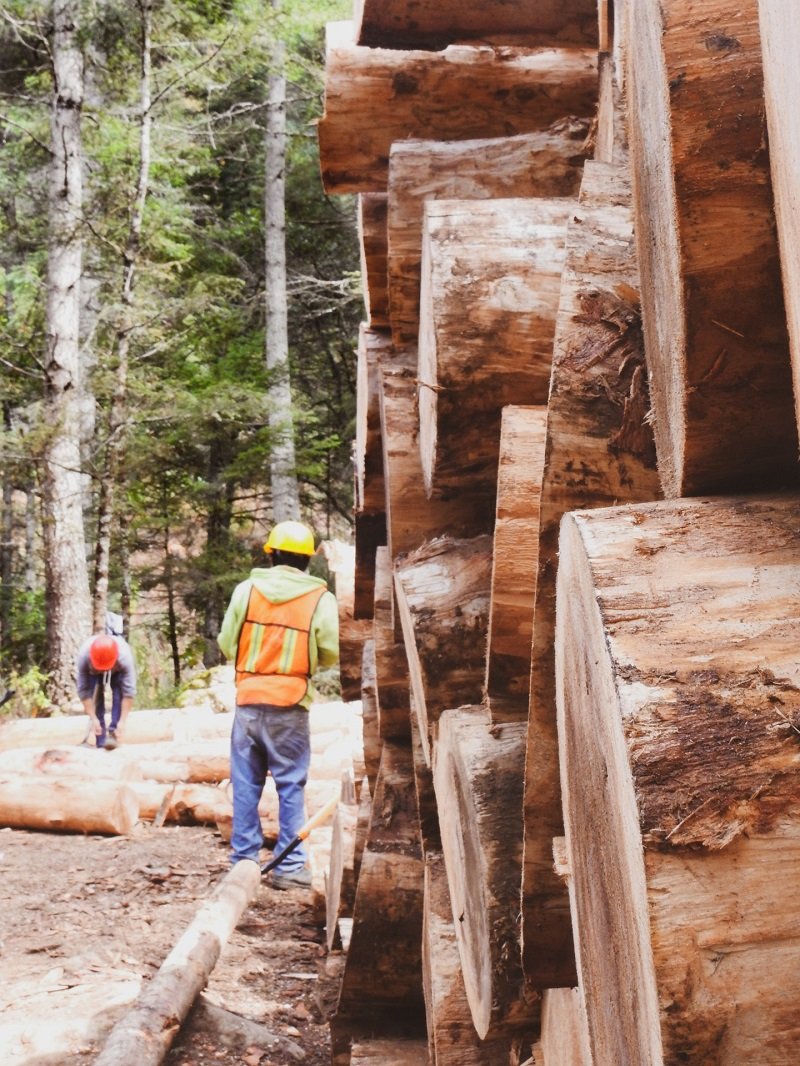Common Logging Methods in Malaysia
And the Machineries Used in Logging

There are several common types of logging methods found in Malaysia. Logging, or it generally is known as commercial logging is a more common phrase in logging methods. Logging methods involve cutting trees for sale as timber or pulp. The timber is then used to build homes, furniture, and whatnot. However, the pulp is used to make paper and paper products. Logging methods are sometimes categorized into two categories: selective cutting and clear-cutting.
- Selective logging generally means selective cutting of the forest trees. This is because loggers choose only wood that is highly valued, such as mahogany.
- Clear-cutting is not as selective. Timber loggers are interested in all kinds of wood. That means they cut all of the trees down. That way, they clear the forest like that. This is how the name clear-cutting come into being.
There are a diversity of international forest types. It is not surprising that a range of forest management and timber harvest systems have been developed. They are developed to employ inherent ecological characteristics of those forest types as guidelines.
There are three major groups of timber harvest practices that you can find. Besides massive clearcutting, you can also find shelterwood and selection systems when it comes to logging. While each one is different and are applied to specific forest types, they have 3 things in common:
- They offer wood fibre for thousands of every-day products.
- At the same time, they establish environmental conditions. These conditions reassure the natural regeneration of the forest.
- They enhance and improve the ecological, economic and social values of the future forest.
However, there are people who believe that selective forest logging is the better option.
Is Selective Logging Really Better?

However, contrary to popular belief, selective logging can be very damaging to the surrounding trees that are not chosen for logging. What happens is that the heavy equipment used to cut the chosen trees often damages the surrounding trees. It is assessed that 40% (40 out of 100 trees) die from just one tree that is selectively cut down (Kricher, 1997). That sure is a whole lot of damage!
It depends on who you actually ask too. According to NASA, clear-cutting is much more harmful to a tropical rain forest. This is because when all of the trees are removed, the soil loses its nutrients and becomes barren (NASA, 1998).
However, according to Ashton, sometimes it is better to clear-cut a part of any forest than to selectively log it. With selective logging, the biggest trees are then taken. It simply means a loss in the seed source. The trees that remain often shade seedlings (baby plants) that need sunlight to grow. Then they eventually become trees.
This is why clear-cutting is better when the soil already contains seeds. With clear-cutting, all of the seedlings are exposed to an even and uniform amount of sunlight. This equivalent amount of sunlight helps the young plants to grow and eventually become trees (Ashton lecture, 2005).
Strip Logging May Be a Better Alternative

Strip logging is a type of logging designed to mimic or copy the natural succession (re-growth) of a forest.
This type of logging involves the clear-cutting of a relatively thin strip of forest that parallels a river along a slope. A gallery forest (bordering the river) is left undamaged. However, a strip is cut immediately upslope and the necessary timber is removed by a road that is also designed to parallel the river.
Following this, another strip is cut a few years later immediately upslope to the first strip and the nearby road. Nutrients can erode (broken down) from the newly cut strip and be washed down the adjacent slope.
This method can help in spreading the recovery of the first strip (Kricher, 1997). The process allows the strip to regrow while choosing other strips to upslope. It also prevents soil erosion (the wearing down of nutrients from the soil). This is because the strip is cushioned by a row of trees remaining and a supply of nutrients from the newly cut strips.
The Equipment Used for Logging

Forestry equipment has been used for so many years to aid in the process of logging. However, with so many different forms of equipment, which one do you know that you need? Here are some of the most common pieces of forestry equipment that can presently be used for logging:
Skidders: A skidder drags material from the woods to a landing or flatter roadside. Skidders will help remove the trees from the forest, taking them to a clearing in a process called skidding.
Feller Bunchers: A feller buncher is a kind of harvester used in logging. It is a motor-powered vehicle with an attachment that can quickly cut down trees. After that, it is able to gather several trees before cutting them.
Knuckleboom Log Loaders: Knuckleboom loaders are swing machines that are made for handling logs. They are engineered with quick hydraulics for effectual swing and boom movements. The grapples are pin mounted with a rotator. It helps in the positioning of the logs for loading.
Swing Machines: These machines are very multi-purpose and are detail-oriented. They can be used in a variety of construction scenes. Expect to see it in roadbuilders, shovel loggers, harvester/processors, stroke delimbers, or log loaders. Although swing machines look super similar to excavator machines, their purpose is very much different.
More Logging Equipment

Wood Chippers: A wood chipper is a machine used for decreasing or chipping wood into smaller pieces such as woodchips. This wood is usually larger tree trunks or limbs. These machines are often transportable, mounted on wheels. That means they are suitable for towing behind a truck or van.
Forestry Mulchers: These mulchers use a rotary drum that comes equipped with steel chipper tools. It helps in shredding vegetation.
Harvesters: These machines assist in harvesting logs. They come with a typical heavy machine base with an attached arm used for grabbing and clear-cutting areas. These machines come in diverse forms. It can be such as wheeled and tracked harvesters.
Forwarders: Forwarders are vehicles with carrying abilities that are used post-harvesting. They are engineered to be used alongside tractors. They can generally cover most rough terrains.
Conclusion
There are several common types of logging methods used by foresters. The above are just some of the more common ones. When people log a forest, they will also need logging vehicles. We have listed some of the logging vehicles that people usually use when logging.
Articles That May Interest You
5 Ways How Misarma Enterprise Tackles Workplace Safety

